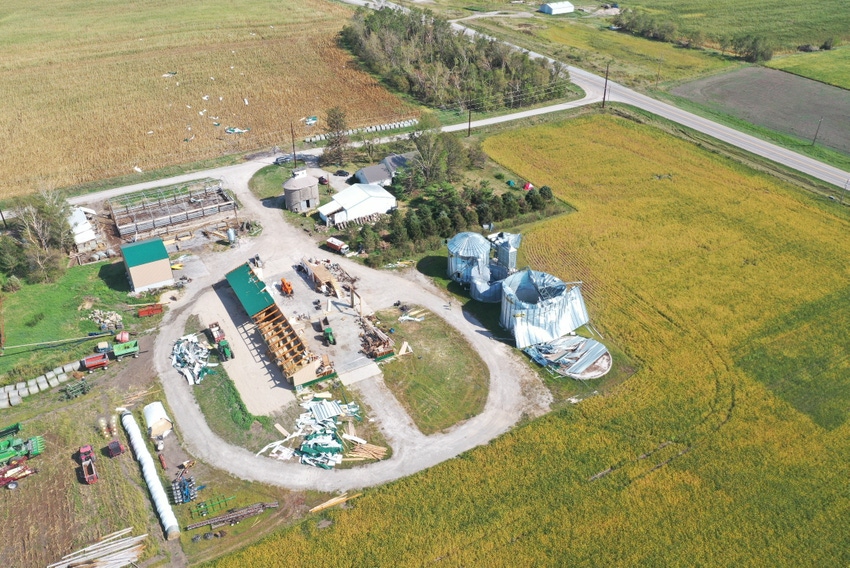Researcher studies derecho impact to improve infrastructure
Findings have potential to influence standards for new construction, lead to solutions that safeguard existing structures.
February 12, 2021

On Aug. 10-11, 2020, a derecho swept across the Plains, producing widespread high, straight-line winds; extreme, torrential rain and hail; and an outbreak of weak tornadoes. The storm killed at least four and left behind significant damage in agricultural areas along a 750-mile path. In fact, its estimated $7.5 billion toll made it the most damaging thunderstorm event in American history.
It was also largely unnoticed outside the Corn Belt at a time when the presidential election, pandemic and racial unrest were dominating the news.
“This was a huge event, but it didn’t receive much coverage, which was one of the huge motivators for me to study it,” said Christine Wittich, assistant professor of civil and environmental engineering at the University of Nebraska–Lincoln.
One of her research areas is community resilience — improving infrastructure to make it less susceptible to natural hazards and reducing the impact of damage to communities. Most research in this field has focused on urban and suburban areas. For example, how buildings can withstand hurricanes or earthquakes. Here was an opportunity to focus on the resilience of critical infrastructure in rural communities. The storage bins and silos dotting the rural landscape often hold thousands of bushels of grain or hundreds of tons of livestock feed. When those structures are damaged or destroyed, the impact is felt locally but can also disrupt the U.S. economy and global food production.
Wittich already had begun researching rural resilience, and she obtained a one-year, $45,000 grant from the National Science Foundation to focus on the derecho’s aftermath. NSF's Rapid Response Research funding mechanism, known as RAPID, enables the agency to quickly process and support research that addresses an urgent need.
“There’s a huge part of the fabric of the United States that we can’t account for right now” in community resilience, she said. “But it’s really critical.”
Storm damage to agricultural infrastructure such as silos is common but tends to be isolated to individual farms and acreages. The derecho’s effects were felt along a path that included Nebraska, Iowa, Illinois, and Indiana, with the most serious damage in Iowa. In that state alone, researchers had a rare opportunity to study damage to thousands of structures. There was no widespread structural damage in Nebraska.
Wittich began by poring over news articles and documentation of structural damage in Iowa. She gathered information from the National Weather Service about wind speeds and other conditions in various areas. Then she headed into the field, studying damage, talking to landowners, documenting damage and correlating it with the weather data she’d compiled from NWS.
Wittich also used a drone to get aerial views of the damage, including close-up looks at roof damage. Her team noted crop damage, too.
She’s now back in her lab studying the data. Her findings have the potential to influence standards for new construction and lead to solutions that safeguard existing structures.
Her goal is to establish key parameters that may affect structures’ ability to resist high winds, including foundation type, anchorage depth and baseplate design. Wittich is also investigating how wind speed affects the probability of structural failure, a critical piece to advancing knowledge of structural vulnerability and identifying regions that are especially vulnerable to widespread damage from strong winds. Until engineers better understand these fundamental research questions, agricultural and rural communities will continue to be devastated by high-wind events, Wittich said.
Research could lead to recommendations for future silo construction and ways to remediate existing structures. For example, civil engineers studying hurricane damage developed hurricane clips that could be added to make existing homes less susceptible to high winds.
“We hope to make a determination of what measures should be incorporated. … What are the mitigation measures that we can recommend?” Wittich said.
You May Also Like



